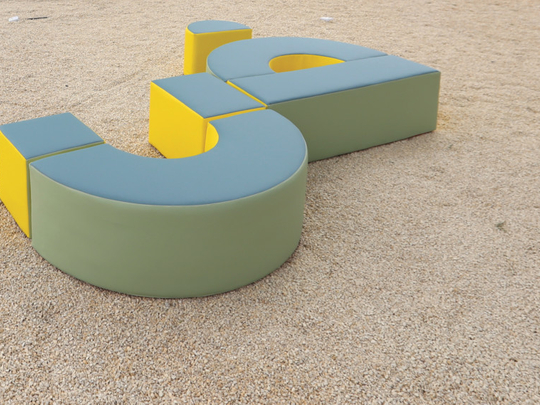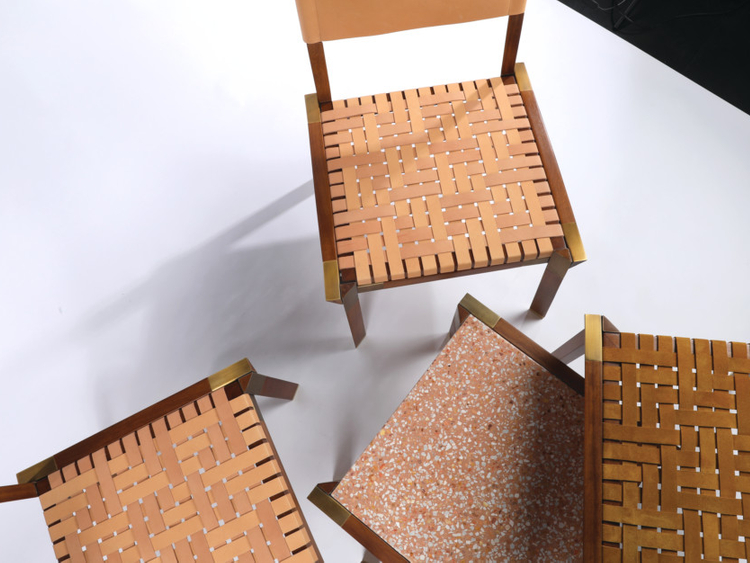
In 2013, Taskheel introduced us to the graduating works of the participants of its first session of Tanween, the design programme that engages designers, makers, and artisans living and working in the UAE to develop works with a vocabulary that is innately from the Emirates. Known as the Design Road Professionals at the time, the presentation that was unveiled at Design Days Dubai (a tradition that is still in place) brought Khalid Shafar, Al Joud Lootah, Zeinab Al Hashemi and Salem Al Mansouri to the fore.
Design Days Dubai 2017 played host to yet another generation of Tanween designers who explored regional design identity through their crafts.
Hamza Omari
Canadian-born Omari was raised in Jordan and graduated with a Bachelor’s degree in Industrial Design from Emily Carr University in Vancouver, Canada. His multidisciplinary practice led him to join Dubai-based studio LOCI Architecture + Design, where he currently works as industrial designer. Omari’s furniture and product designs have been exhibited in several galleries and publications internationally, including Dezeen and The Financial Times. His work, Zea, is a desert aquarium. The table lamp offers a window into a forgotten world, allowing users to engage visually with what was once theirs. Interaction with Zea causes desert sand to slowly ebb back and forth, alternately and progressively exposing or covering a light source that filters like a Bedouin fire seen through a repurposed mashrabiya.
Hatem Hatem
An Iraqi architect based in the UAE, Hatem received his Bachelor’s in Architecture from the American University of Sharjah in 2014. He recently cofounded a hypothetical office (AHO), a collaborative body that encourages speculative research into environments and built conditions. He presented Calcified, a suspended ceiling light that adopts the natural synthesis inherent to marine calcification processes. Ultimately, the work forges a new design method that harnesses nature, using seawater and electrically charged wireframe structures as magnets to attract artificial limestone formations. Calcified suspends the resultant limestone as lighting clusters that carry the formal and material qualities of their natural equivalent.
Lujain Abulfaraj
Saudi-born Abulfaraj is the co-founder of Dubai-based Twothirds Design Studio and the WTD Magazine. Her work is wide-ranging, spanning visual language, typography, branding and product design. During Tanween, the alumni of the American University of Sharjah built on her explorations into Arabic typography and calligraphy in Lara Assouad’s Modular Arabic Typography workshop at Tashkeel. Exploring new, playful and engaging letterforms that focus on the essence of the language, the experience taught her the restrained art of distillation and simplification. This understanding has allowed her to decipher the essential patterns of Arabic letters, crucial to developing an intuitive, pure relationship with the language and its nuances. The result is Dhadh — children’s seating named after the Arabic letter that is unique to it.
Lujaine Rezk
Dubai-based furniture designer and fabricator Rezk currently works for Cultural Engineering’s education department where she helps produce exhibitions and publications internationally with venues including the Venice and London Biennale. Her collection, Mirkaz, is inspired by a lost tradition — the now abandoned social custom of transporting worn out indoor couches to the outdoors to create impromptu, temporary places for conversation. This tradition belongs deeply to the region and reflects the natural tendency to create intimate social gathering spaces in public zones. With the creation of three new furniture pieces — a table, chair and a stool, made from teak wood, metal joints, woven camel leather and terrazzo — Rezk instigates a new act of social place-making and presents what is essentially, a salve against cultural amnesia.
Call for Entries 2017-18
Tanween is open to all designers currently living and working in the UAE and over the age of 21 years. Entries must be submitted by April 11 and should include a comprehensive biography, a design statement outlining approach and influences accompanied by digital images of recent works.










